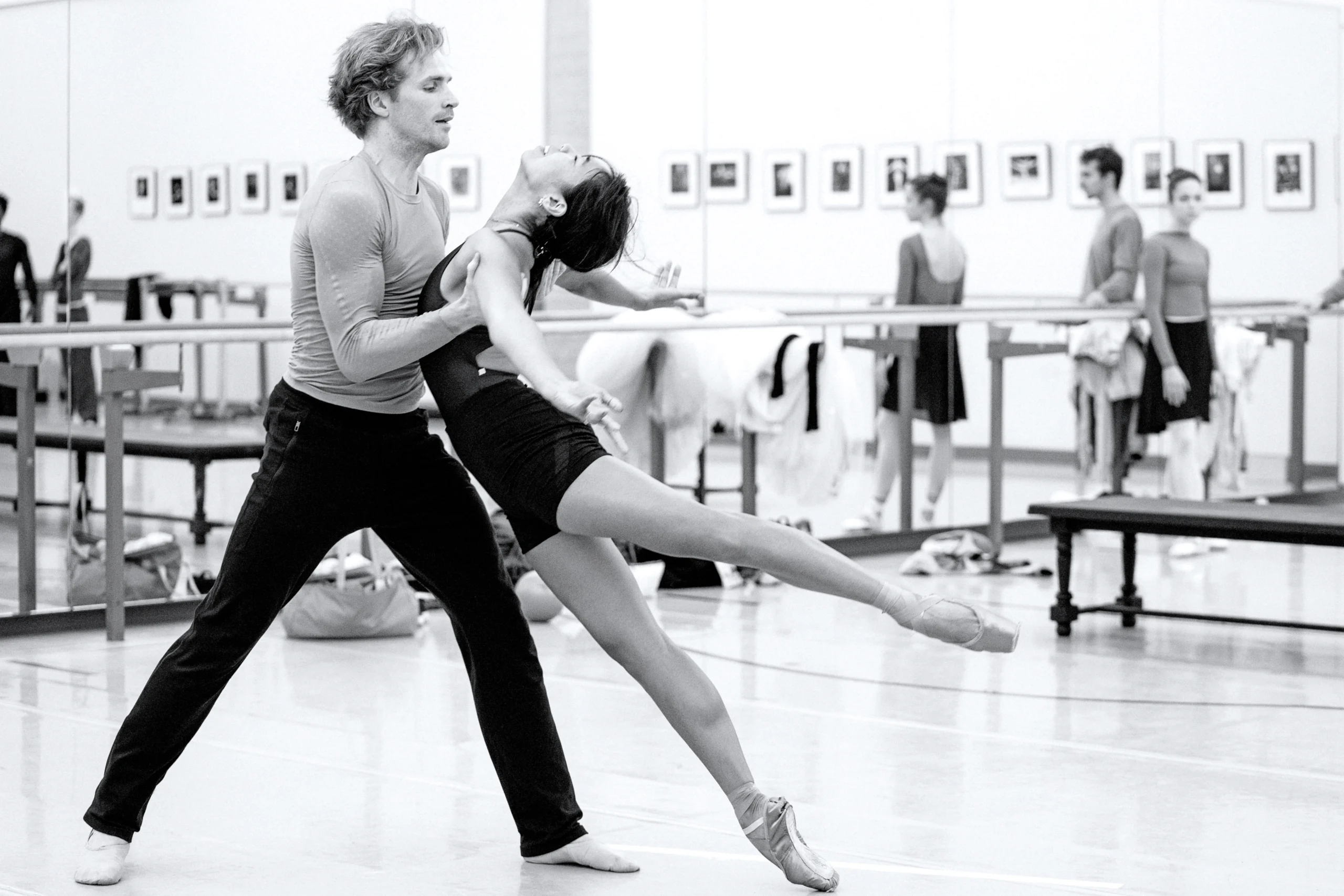Helen Pickett on Choreographing Emma Bovary at The National Ballet of Canada
Helen Pickett is a happy camper. When we speak over Zoom, she is in the final weeks of creating a new work for the National Ballet of Canada, Emma Bovary—her first commission for the company. The 60-minute contemporary ballet focuses on the flawed and tragic heroine of Gustave Flaubert’s ground-breaking 1856 novel Madame Bovary. It runs November 11–18 alongside James Kudelka’s Passion at Toronto’s Four Seasons Centre for the Performing Arts.
“I love figuring out all the negotiations and the puzzles of every new environment. I’m like a kid in a candy shop,” says Pickett on working with NBoC for the first time.
Pickett danced with William Forsythe’s Frankfurt Ballet for 11 years, then started working with theater company The Wooster Group in New York City in 1998. Both companies use investigative and improvisational strategies to create boundary-busting theatrical experiences.

Pickett worked with some of these strategies to dive into the possibilities of the body, and the discovery of the world of Emma Bovary. “My mantra is ‘Change is the only constant,’ ” she says. “I learned that while practising improv in-depth. You don’t only learn [improv], but you learn to embrace it. You don’t only learn to embrace it, you learn that it’s the place of magic.”
Pickett’s actor and writer father suggested Madame Bovary as possible ballet material a few years back. Stalling initially, Pickett discovered a new translation, by Lydia Davis, whose words made Emma Bovary’s complex character bloom into nuanced language—and one that also honored the richness and sensuality of Flaubert’s writing.
“I have wondered at times if Flaubert was a synesthete because of his descriptions,” says Pickett. “I mean, you can taste the apricot, you can smell Emma’s garden, you can see the texture of her dress. All of that is great fun for someone like me, a choreographer that lives in the senses. I want to break the fourth wall and have the work land on the audience’s skin.”
Pickett is co-directing the work with longtime collaborator and dramaturge James Bonas. Their directorial details, alongside an evocative score by fellow longtime collaborator Peter Salem, extend the reach of Emma’s psychological and emotional landscapes. Video by production designer Anouar Brissel and hand-drawn animations by Grégoire Pont will push it even further.

“It’s adding texture and life to another level of humanity that we all have,” says Pickett of the media, “but it’s so completely ethereal. It’s that magical element of fantasy, when Emma goes away into her visions of where she’d rather be than in the real world.”
Locations of escape from Emma’s unfulfilled life—her garden, Lheureux’s shop, and elsewhere—receive heightened visual or scenic treatment. For instance, in a rehearsal excerpt livestreamed on World Ballet Day, the dancers pushed around chairs on wheels to add surreal dynamism to a dress-shop scene where Emma indulges her mania for acquiring beautiful and expensive things.
Production innovations aside, Pickett finds Emma herself endlessly interesting. There’s the narrative of Madame Bovary many of us are familiar with, and then there’s what lies beyond, in the recesses of Emma’s psyche; the latter is Pickett and her team’s preferred terrain. The fact that first reactions to Flaubert’s novel dragged it into court as an obscenity and scandal makes his protagonist all the more compelling.
“There might be mental health issues,” Pickett says of the troubled Emma. “The way her addictions grab her, and the way that her fantasies relentlessly avoid reality—this woman was an independent person who made a lot of wrong choices. Yet she doesn’t turn into an animal; she stays who she is until the end.”
NBoC first soloist Jenna Savella, one of three Emmas for the production, finds the character relatable.
“I mean, she’s human,” says Savella, who will share the role with principal Heather Ogden and second soloist Hannah Galway. “And she’s female in a man’s world. She’s trying to find out who she is within all of that. We all have moments of weakness, but also of trying to be loyal in moments, or virtuous, and then giving yourself up to real emotion.”

Savella says that in the studio, Pickett choreographs that humanity in a contemporary way. “She definitely draws on her Forsythe,” says Savella, “so there’s a lot of freedom, and she wants you to use opposition and your entire physicality, with big steps. Using your ribs and your neck and head are big things for her.”
In the past few years, Pickett has made new works for Pittsburgh Ballet Theatre, West Australian Ballet, and Scottish Ballet, and she has new creations upcoming for American Ballet Theatre, Boston Ballet, and the Dutch National Ballet. Toronto audiences, who have not yet had a chance to see Pickett’s craft in action, have new NBoC artistic director Hope Muir to thank for this month’s much anticipated introduction. Pickett and Muir have worked together before, notably at Scottish Ballet, where Muir was assistant artistic director and Pickett created her acclaimed full-length ballet, The Crucible.
“We hit it off immediately because we think about art in the same way: It is only about change. This is where we meet, in the questions and the excitement we have about what ballet can be.” Pickett repeats herself for emphasis: “What ballet can be.”“We’re at the beginning of major shifts. And I hope we have the courage to keep going.”





